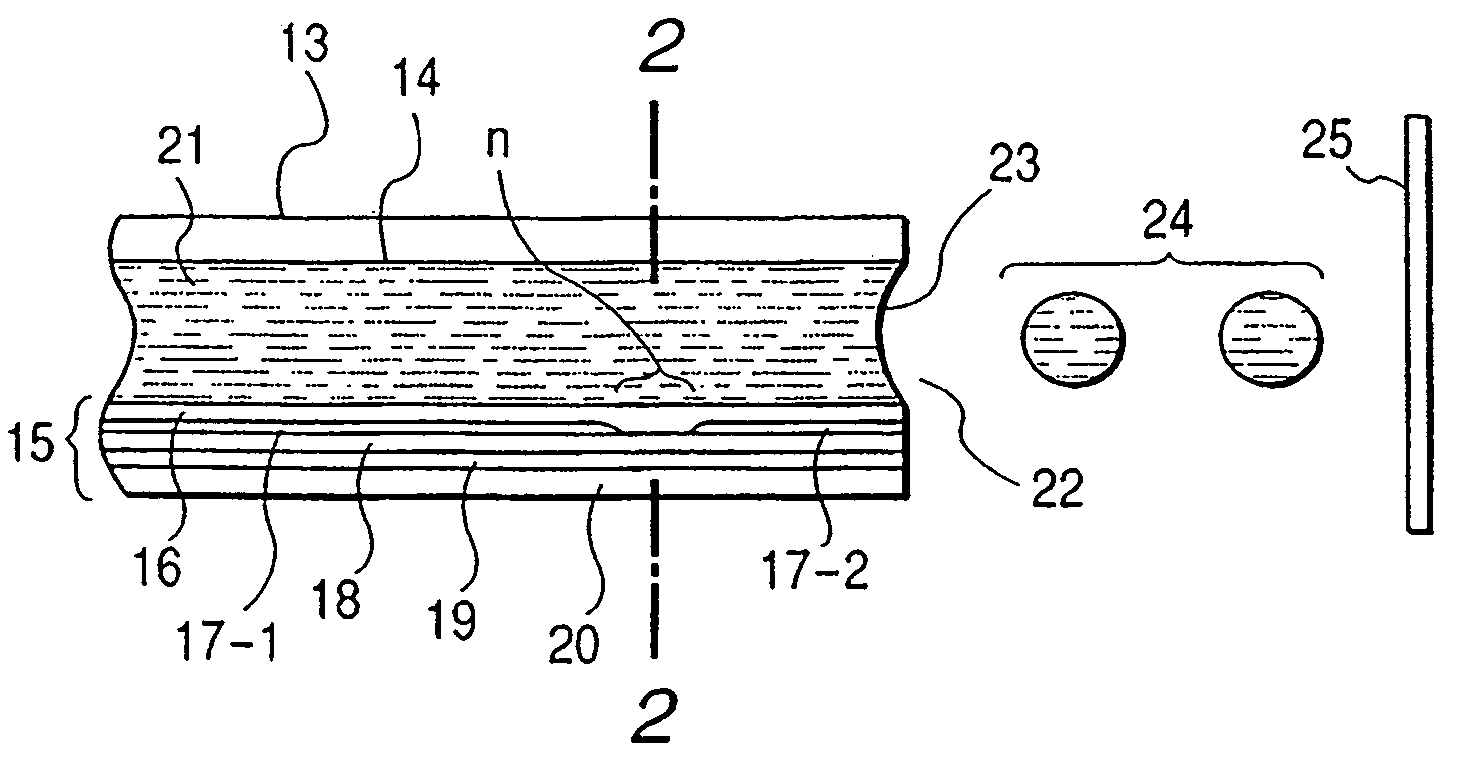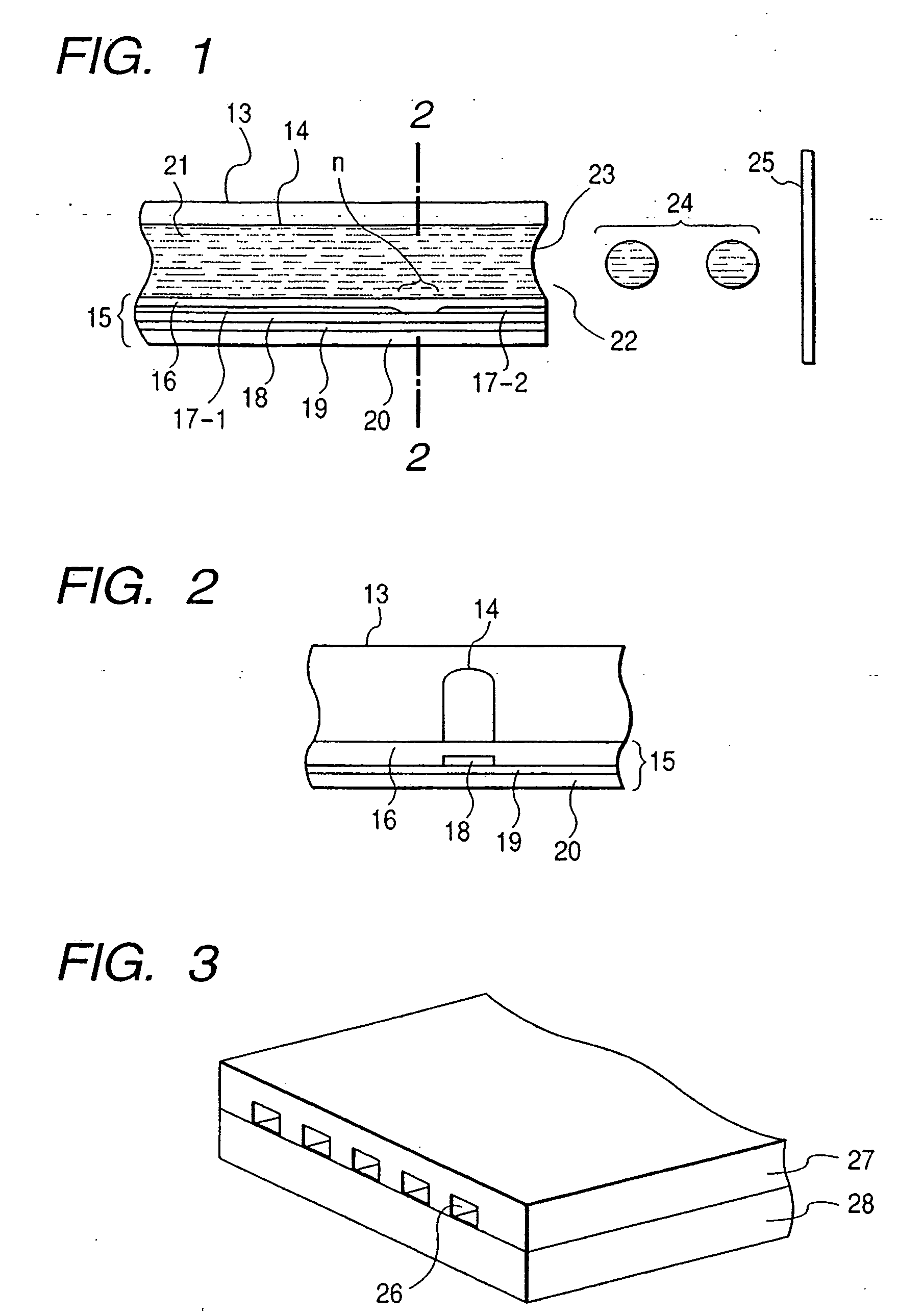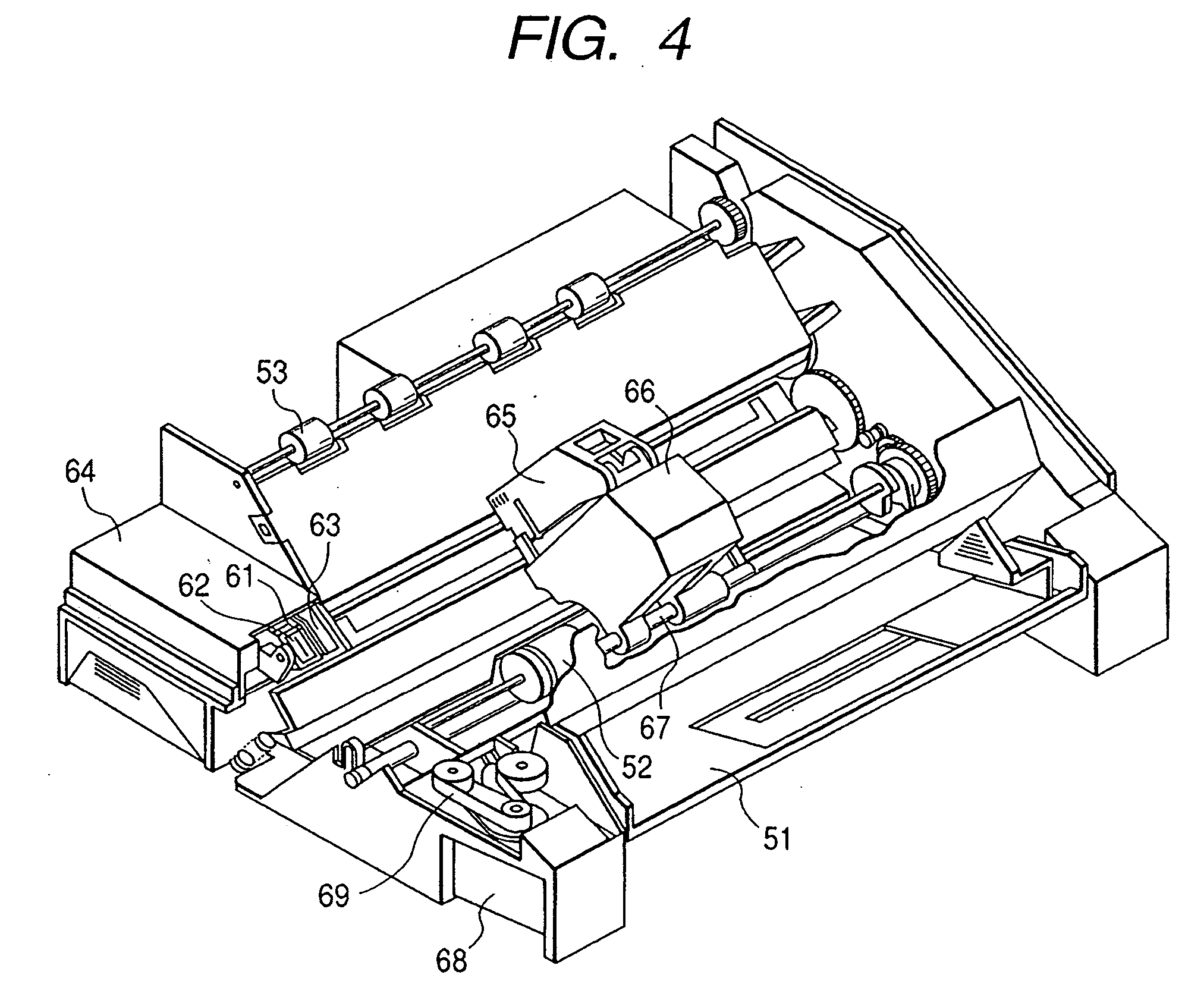Ink-jet recording method and ink-jet ink
a recording method and inkjet technology, applied in the field of inkjet recording method and inkjet ink, can solve the problems of ink droplet form deformation, deterioration of ink ejection properties, and deterioration of responsiveness to ejection signals, so as to improve the ink ejection properties of the head
- Summary
- Abstract
- Description
- Claims
- Application Information
AI Technical Summary
Benefits of technology
Problems solved by technology
Method used
Image
Examples
example 1
Ink of EXAMPLE 1
[0060] Twenty % by mass of Cabojet 300 (trade name, product of CABOT Co., a 15% by mass aqueous dispersion) as a water-dispersing coloring material were added to a liquid containing no coloring material, the composition of which was adjusted in such a manner that its cloud point becomes 30° C. (T), thereby preparing an ink according to EXAMPLE 1.
example 2
Ink of EXAMPLE 2
[0061] Twenty % by mass of Cabojet 300 (trade name, product of CABOT Co., a 15% by mass aqueous dispersion) as a water-dispersing coloring material were added to a liquid containing no coloring material, the composition of which was adjusted in such a manner that its cloud point becomes 60° C. (T), thereby preparing an ink according to EXAMPLE 2.
example 3
Ink of EXAMPLE 3
[0062] Twenty % by mass of Cabojet 300 (trade name, product of CABOT Co., a 15% by mass aqueous dispersion) as a water-dispersing coloring material were added to a liquid containing no coloring material, the composition of which was adjusted in such a manner that its cloud point becomes 50° C. (T), thereby preparing an ink according to EXAMPLE 3.
Ink of COMPARATIVE EXAMPLE 1
[0063] Twenty % by mass of Cabojet 300 (trade name, product of CABOT Co., a 15% by mass aqueous dispersion) as a water-dispersing coloring material were added to a liquid containing no coloring material, the composition of which was adjusted in such a manner that its cloud point becomes 20 to 25° C. (T), thereby preparing an ink according to COMPARATIVE EXAMPLE 1.
Ink of COMPARATIVE EXAMPLE 2
[0064] Twenty % by mass of Cabojet 300 (trade name, product of CABOT Co., a 15% by mass aqueous dispersion) as a water-dispersing coloring material were added to a liquid containing no coloring material, the...
PUM
 Login to View More
Login to View More Abstract
Description
Claims
Application Information
 Login to View More
Login to View More - R&D
- Intellectual Property
- Life Sciences
- Materials
- Tech Scout
- Unparalleled Data Quality
- Higher Quality Content
- 60% Fewer Hallucinations
Browse by: Latest US Patents, China's latest patents, Technical Efficacy Thesaurus, Application Domain, Technology Topic, Popular Technical Reports.
© 2025 PatSnap. All rights reserved.Legal|Privacy policy|Modern Slavery Act Transparency Statement|Sitemap|About US| Contact US: help@patsnap.com



